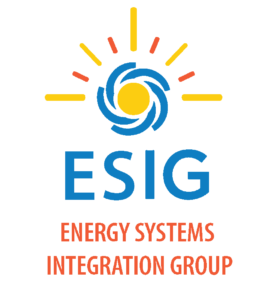Wind and solar integration studies have evolved tremendously during the past 10–15 years. When I came to the National Renewable Energy Laboratory (NREL) in 1992, my first “integration study” was really a value study: what would be the value of integrating 1,000 MW of wind capacity in California? I used a production simulation model that used a load-duration curve approach because chronological models were rare and took more computing power than was often available. Wind data came from anemometers placed at a range of 9–45 meters; and at the time, no good data were available regarding the variability of a wind power plant compared to a wind turbine. It was relatively easy to apply a wind turbine power curve to the hourly average wind speed, resulting in 8,760 hours of wind power data.
The objective of integration studies has evolved significantly. In the early days, utilities were primarily concerned with—in some cases obsessed with—the capacity value of wind energy, and the prevailing notion was to pair wind with either a generator or a storage device to produce a flat output. “Common sense” was that only 1%–2% (based on the ratio of installed wind capacity to system peak) could ever be successfully integrated. Throughout time, this thinking has evolved. It is now informed by sophisticated studies using the output of large-scale weather models to construct realistic wind and solar power data sets and by advances in computational abilities and high-resolution models. Of course, collectively we have learned by doing: the United States now has more than 80,000 MW of installed wind energy and more than 40,000 MW of solar photovoltaic generation. We’ve learned that although solar energy is generally correlated with peak demand, it can quickly saturate the market and significantly change the timing of the net peak demand; further, wind energy can provide complementary generation at night. New concerns have emerged regarding minimum generation constraints that can become binding during periods of high wind and/or solar generation along with the recognition that in some cases minimum generation constraints on thermal units introduce over-generation problems. The impact of market design on flexibility incentives for resources is gaining significant attention also.
At the same time, wind and solar (inverter) technologies have evolved so that these devices can respond to a suite of controls that range from inertial time frames, to frequency regulation, and dispatch. Studies have examined increasing ranges of wind and solar penetration levels, and some are now evaluating how a system could operate with very high wind and solar energy penetration levels: 80%–100%. As solar energy deployment increases, many issues surrounding the interactions and interfaces between the transmission system and distribution will be the subject of many future studies.
Where are we today? Integration studies are often now embedded in utility integrated resource plans (IRPs) and other routine planning and operational studies. But as the market areas of regional transmission organizations and independent system operators have increased in size, along with newly developed markets such as the Western Energy Imbalance Market (EIM), renewable generation integration is now understood in the context of large portions of the relevant interconnection. This has resulted in the intersection of studies on renewable integration, transmission planning, and the bulk market. Of course, the focus of each of these studies differs, but the key point is that their objectives now incorporate significant levels of renewable generation. Examples include the Western Electricity Coordinating Council’s Transmission Expansion Planning Policy Committee study process in the West and the Midcontinent System Operator’s Multi-Value Projects studies in the East.
But studies are not confined to a single market area or even to a single interconnection. Because of the well-known benefits of large balancing authority areas for efficient renewable integration, NREL’s Interconnection Seams Study examines the benefit of a more integrated power system to effective system operation under an alternative renewables future. The emerging North American Renewable Integration Study takes this a step further, examining the “super grid” that would result from linking of the North American interconnections. Similar work has been done in Europe; in particular, Électricité de France recently performed a pan-European study with up to 60% renewable generation integration.
Individual utility studies will continue, but because of the differences in industry structure across the United States, there is no one-size-fits-all approach. For example, Portland General Electric’s IRP focuses on energy management, renewable expansion, and technology integration as the three components that are central to a sustainable power supply. Renewable energy expansion is analyzed as part of a resource portfolio that helps the utility meet its objectives, subject to regulatory approval, and with a view toward participating in the Western EIM.
Advanced turbine/inverter capabilities are not confined to study scenarios. For example, a few years Public Service Company of Colorado/Xcel began using wind turbines to regulate frequency. The combination of automatic generation control and the ability to respond to economic set points (dispatch) fundamentally changes the way that wind turbines—and solar smart invertors—are integrated into the power system. These advanced controls, when incentivized and used by the power system operator, make wind and solar power active suppliers of system services that they could not provide a decade ago.
In many respects, wind and solar energy are not novel sources of electricity. They are now incorporated in many of the ongoing analysis and modeling tools that are prerequisites for the economic and reliable operation of the electric power system.
Michael Milligan
Senior Scientist
NREL

Great article and summary of the market! It was interesting to read and understand the concerns utilities and operators have had over the years about variable renewables integration from 1990s to now.
Solar PV Panel and Wind Turbine Integration? Sounds like sustainability.